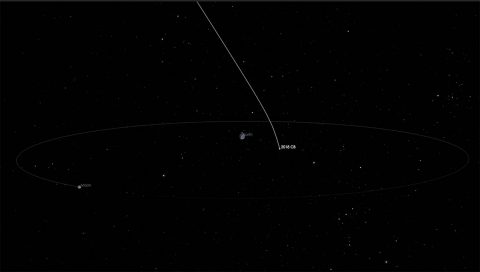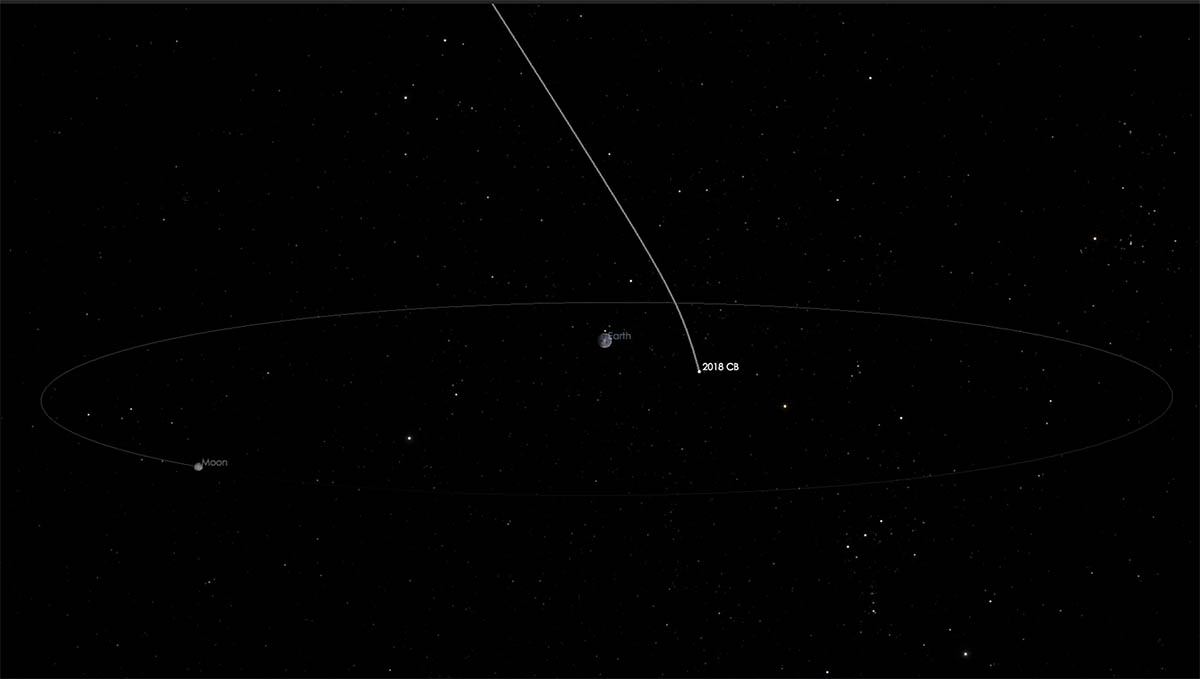NASA’s Jet Propulsion Laboratory
 Pasadena, CA -Two small asteroids recently discovered by astronomers at the NASA-funded Catalina Sky Survey (CSS) near Tucson, Arizona, are safely passing by Earth within one lunar distance this week.
Pasadena, CA -Two small asteroids recently discovered by astronomers at the NASA-funded Catalina Sky Survey (CSS) near Tucson, Arizona, are safely passing by Earth within one lunar distance this week.
The first of this week’s close-approaching asteroids — discovered by CSS on February 4th — is designated asteroid 2018 CC. Its close approach to Earth came Tuesday (February 6th) at 12:10pm PST (2:10pm CST) at a distance of about 114,000 miles (184,000 kilometers). The asteroid is estimated to be between 50 and 100 feet (15 and 30 meters) in size.

Of potentially greater interest is asteroid 2018 CB, which will also pass closely by Earth on Friday, February 9th, at around 2:30pm PST (4:30pm CST), at a distance of about 39,000 miles (64,000 kilometers), which is less than one-fifth the distance of Earth to the Moon).
The asteroid, which is estimated to be between 50 and 130 feet (15 and 40 meters) in size, was also discovered by CSS on February 4th.
“Although 2018 CB is quite small, it might well be larger than the asteroid that entered the atmosphere over Chelyabinsk, Russia, almost exactly five years ago, in 2013,” said Paul Chodas, manager of the Center for Near-Earth Object Studies at NASA’s Jet Propulsion Laboratory in Pasadena, California. “Asteroids of this size do not often approach this close to our planet — maybe only once or twice a year.”
JPL hosts the Center for Near-Earth Object Studies for NASA’s Near-Earth Object Observations Program, an element of the Planetary Defense Coordination Office within the agency’s Science Mission Directorate.
More information about asteroids and near-Earth objects can be found at:
https://www.jpl.nasa.gov/asteroidwatch
For more information about NASA’s Planetary Defense Coordination Office, visit:
https://www.nasa.gov/planetarydefense
For asteroid and comet news and updates, follow AsteroidWatch on Twitter:



